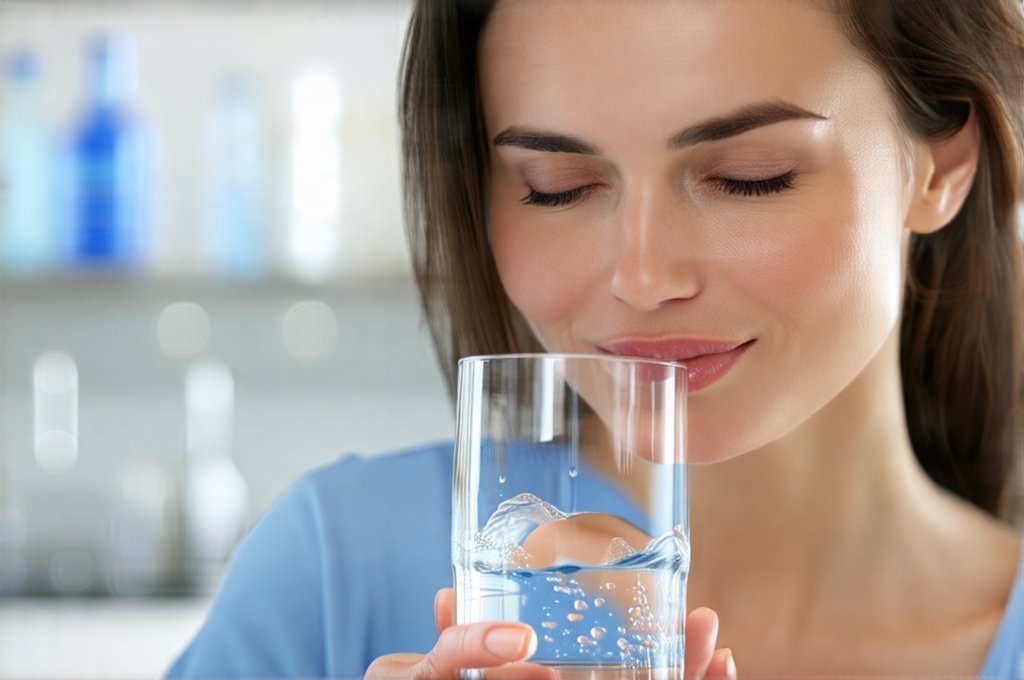Our bodies are remarkable machines, constantly striving for balance – a state known as homeostasis. This delicate equilibrium relies on countless factors, but one consistently underestimated aspect is hydration. We’re often told to “drink more water,” and while well-intentioned, this advice can be overly simplistic. The truth is that proper hydration isn’t always about increasing fluid intake; it’s about restoring and maintaining the body’s electrolyte balance and optimizing how we utilize the fluids we already have. Focusing solely on volume overlooks a complex interplay of minerals, hormones, and individual needs.
Many assume dehydration simply means feeling thirsty or having dark urine, but these are often late-stage signals. Subtle signs like fatigue, headaches, difficulty concentrating, and even muscle cramps can indicate mild dehydration long before you consciously register thirst. Furthermore, the “eight glasses a day” rule is an arbitrary guideline that doesn’t account for activity level, climate, diet, or individual metabolic rate. A sedentary person in a cool environment will have vastly different hydration needs than an athlete training in hot weather. Understanding these nuances is crucial for effective hydration, and it’s why simply drinking more water isn’t always the answer – sometimes it’s about smarter hydration. In some cases, anxiety can affect urination patterns; understanding why some women pee more when anxious may provide insight into your body’s signals.
Beyond Volume: The Electrolyte Equation
Hydration isn’t just about water; it’s intimately connected to electrolytes—minerals like sodium, potassium, magnesium, and calcium that carry an electric charge when dissolved in fluids. These electrolytes are essential for countless bodily functions, including nerve impulse transmission, muscle contraction, fluid balance, and pH regulation. When we sweat, whether through exercise or heat exposure, we lose both water and electrolytes. Replenishing only water can lead to a dilution of electrolyte concentration, creating an imbalance known as hyponatremia (low sodium levels), which can be dangerous.
Imagine a carefully balanced chemical solution. Adding more solvent (water) without adjusting the solute (electrolytes) disrupts that balance. Similarly, drinking excessive amounts of plain water after strenuous activity can inadvertently worsen dehydration by lowering electrolyte levels. This is why sports drinks often contain electrolytes – to help restore what’s lost through sweat. However, even these aren’t always necessary or ideal; a well-rounded diet rich in fruits and vegetables provides many essential electrolytes naturally.
Furthermore, chronic conditions and certain medications (like diuretics) can also affect electrolyte balance, influencing hydration needs. Individuals with kidney problems, for instance, may need to carefully monitor their fluid intake and electrolyte levels under medical supervision. The key takeaway is that proper hydration isn’t just about how much water you drink; it’s about maintaining the ratio between water and electrolytes within your body. Why hydration matters so much for female health is a topic gaining more attention as research progresses.
Individualized Hydration Strategies
Recognizing that everyone’s hydration needs differ significantly is paramount. Several factors influence how much fluid we need, and a one-size-fits-all approach simply doesn’t work. – Activity level: Athletes and individuals engaged in strenuous physical activity require more fluids than sedentary people. – Climate: Hot and humid environments lead to increased sweat loss, necessitating greater fluid intake. – Diet: A diet high in sodium can increase water retention, while a diet rich in fruits and vegetables contributes to hydration naturally. – Health conditions: Certain medical conditions, such as kidney disease or heart failure, may require fluid restrictions.
Instead of focusing solely on drinking more water, consider these strategies for personalized hydration: 1. Listen to your body: Pay attention to early signs of dehydration like fatigue, headaches, and difficulty concentrating. Don’t wait until you feel thirsty. 2. Electrolyte-rich foods: Incorporate fruits (bananas, oranges), vegetables (spinach, sweet potatoes), and dairy products into your diet. 3. Hydrating beverages beyond water: Herbal teas, coconut water, and diluted fruit juices can contribute to hydration while also providing electrolytes or other beneficial nutrients. 4. Monitor urine color: Pale yellow urine generally indicates adequate hydration, while dark yellow urine suggests dehydration.
Assessing Your Hydration Status
Determining if you’re adequately hydrated goes beyond simply feeling thirsty. There are several practical ways to assess your hydration status: – Urine Color: As mentioned earlier, pale yellow is a good sign. Dark yellow or amber indicates dehydration. – Skin Turgor Test: Gently pinch the skin on the back of your hand. If it snaps back quickly, you’re likely well-hydrated. Slow return suggests dehydration. (Note: this test can be less reliable in older adults.) – Weight Fluctuations: Significant weight loss after exercise is often due to fluid loss and indicates a need for rehydration.
However, these methods are somewhat subjective. More accurate assessments require professional medical evaluation, which might include blood tests to measure electrolyte levels or urine specific gravity (a measure of urine concentration). It’s important to remember that hydration needs change dynamically based on your activity level and environment. Regularly assessing your status helps you adjust your fluid intake accordingly. If you experience burning sensations, it’s also worth considering does urethral burning always mean infection?
The Role of Hormones in Hydration
Hormones play a surprisingly significant role in regulating fluid balance. Antidiuretic hormone (ADH), also known as vasopressin, is released by the pituitary gland in response to increased blood concentration or decreased blood volume. ADH signals the kidneys to reabsorb water, reducing urine production and conserving fluids. Conversely, aldosterone, produced by the adrenal glands, regulates sodium levels, which indirectly affects fluid balance.
Disruptions in hormonal regulation can significantly impact hydration. For example, conditions like diabetes insipidus affect ADH production, leading to excessive urination and dehydration. Similarly, certain medications can interfere with aldosterone function, disrupting sodium balance. Understanding this hormonal interplay highlights the complexity of hydration and why it’s not simply a matter of drinking more water. It emphasizes the importance of addressing underlying health conditions that might be affecting fluid regulation.
Hydration and Cognitive Function
Dehydration, even mild dehydration, can significantly impair cognitive function. Studies have shown that even a 1-2% loss in body weight through fluid loss can lead to decreased concentration, impaired memory, and reduced alertness. This is because the brain is highly sensitive to changes in hydration levels. Proper hydration ensures optimal blood flow to the brain, which is essential for neuronal function.
The impact of dehydration on cognitive performance is particularly relevant for tasks requiring focus and attention, such as driving, studying, or performing complex work. Maintaining adequate hydration can improve reaction time, enhance decision-making abilities, and boost overall cognitive efficiency. So, if you’re experiencing brain fog or difficulty concentrating, before reaching for another cup of coffee, consider whether you might simply be dehydrated. A glass of water – or an electrolyte-rich beverage – could be all it takes to sharpen your focus and improve your performance.





















